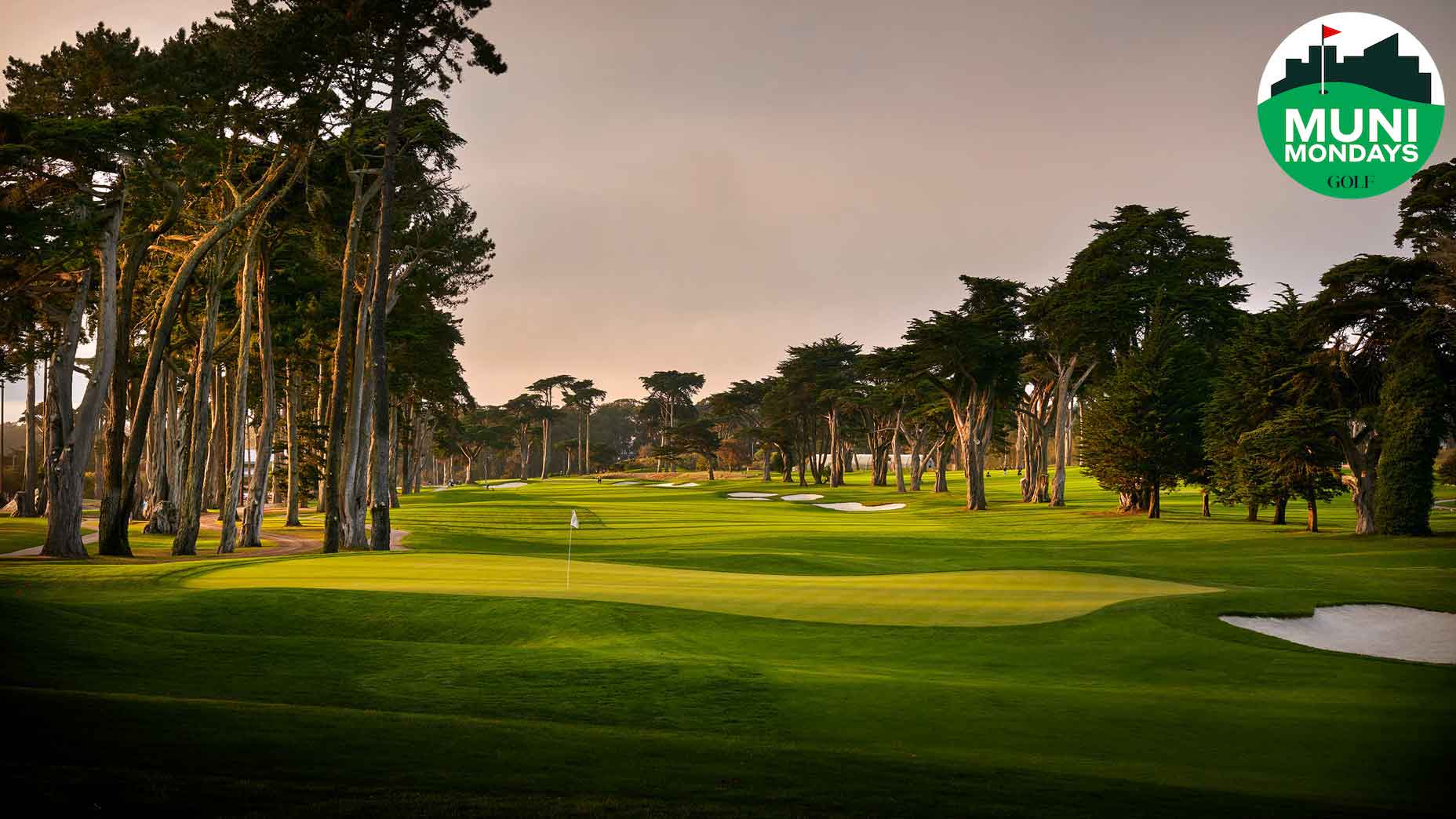TPC Sawgrass, site of this week’s Players Championship, is a public course in the same way that Virgin Galactic is public transportation: anyone can play it, just as anyone can book a seat on a flight into the stratosphere.
For a price.
In 2023, the peak-season rate at Sawgrass starts at $600 per player (for Virgin Galactic fares, check in with Richard Branson). That’s cheaper than it was last year, when dynamic pricing sent Sawgrass green fees rocketing to $820. But it’s still a far cry from the bargain rates at many of the courses we celebrate in this space.
Not that munis can’t have a high-end sheen. Some, including Chambers Bay and Bethpage Black, have hosted majors. But it’s easy to forget that a handful of others serve as regular Tour stops, just like Sawgrass — though they’re not as spendy for public play.
Where are they? And what do they cost?
In keeping with the populist spirit of Muni Mondays, here’s a look at the five municipal tracks where the world’s best peg it every year.
1 and 2. Torrey Pines — Farmers Insurance Open (San Diego, Calif.)
If you see hang gliders drifting in the backdrop, there’s a good chance you’re watching coverage from Torrey Pines, the bluff-top San Diego muni that has long staged the Farmers Insurance Open, a lynchpin of the West Coast Swing. There are two courses here, the North and South, a pair of William Francis Bell designs that first opened for play in the late 1950s and have since undergone substantial renovations, by Tom Weiskopf and Rees Jones, respectively. Though both courses are used during the Farmers, the South—the longer and the tougher of the two—gets sole billing for the tournament’s weekend rounds. The South has also been the stage for two memorable U.S. Opens: in 2008, when Tiger Woods won on a broken leg; and 2021, when Jon Rahm closed birdie-birdie for his first major.
On both the North and South, tee times can be booked up to 90 days in advance and tend to sell out quickly. But not all is lost if you get shut out, as there is a local tradition of sending groups out between between sunrise and the first official tee times of the day. That’s the good news. The bad news is that it is first-come-first-served, and the hardest of the hard-core sleep in the parking lot to snag those slots.
City Resident Rates:
South Course: $67-$83
North Course: $47-$62
Non-Resident Rates
South Course: $223-$278
North Course: $141-$176
3. Memorial Park — Houston Open (Houston, Tex.)
Houston, we have a marquee muni. Situated within an expansive city park of the same name, Memorial Park was born in 1923 as a nine-hole layout but bloomed into a fully grassed 18 in 1936. Between 1947 and 1963, it staged the Houston Open 14 times. Jackie Burke Jr., Cary Middlecoff and Arnold Palmer all claimed Houston Open titles in that span. Dave Marr didn’t. But the PGA Championship-winner-turned-golf-broadcaster cut his teeth at Memorial Park as a kid and never lost his fondness for it. His ashes are scattered on the grounds.
In 1995, after slogging through a period of neglect, Memorial Park underwent a renovation, a $7 million project that was minor compared to what was to come. A more comprehensive facelift was completed during the pandemic, when Tom Doak put the final touches on an overhaul that made Memorial Park Tour-ready again.
In its reborn go around as Houston Open host, Memorial Park has much larger greens than the average Tour venue (small putting surfaces weren’t an option on a course that gets such heavy year-round play). It also has a hugely entertaining closing stretch on holes 13 through 17, which feature two drivable par-4s and two gettable par-5s.
City resident rates: $30-$38
Non-resident rates: $120-$140
4. TPC Scottsdale — WM Phoenix Open (Scottsdale, Ariz.)
Every year over Super Bowl week, tens of thousands of fans, some of them sober and fully clothed, descend on the Stadium Course for the WM Phoenix Open, a tournament that makes the Ryder Cup look tame. The atmosphere is especially electric around the 16th hole, an otherwise unremarkable par-3 that morphs into a gladiatorial arena ringed by soaring, jam-packed grandstands.
But you probably knew all that.
What you might not have realized is that the Tom Weiskopf-Jay Morrish design is partly owned by the city, which qualifies it as a muni, even if its green fees aren’t exactly for the masses. Management uses dynamic pricing, with peak-season rates often ranging from $329 to $525 per player.
5. TPC Harding Park — Hanwha Lifeplus International Crown (San Francisco, Calif.)
In a proud life that began in 1925, Harding has been a lot of things to a lot of people. A regular Tour stop. A major championship venue. A Presidents Cup stage. The home course to Ken Venturi, whose parents used to run the pro shop. Few munis have such a long CV. That glittery resume will grow again this May, when the LPGA swings through town for the Hanwha Lifeplus International Crown, a biennial event that features four-player teams from eight countries in match-play competition.
The course they’ll play was originally designed by Willie Watson and Sam Whiting (the same duo who did the nearby Olympic Club) and upgraded dramatically in the early 2000s. Its hallmarks include an innovative cinnamon-roll routing, with a front nine wrapped inside the back nine, and a stout closing stretches that curls along the edge of Lake Merced.
City resident rates: $65-$79
Non-resident rates: $180-$200
